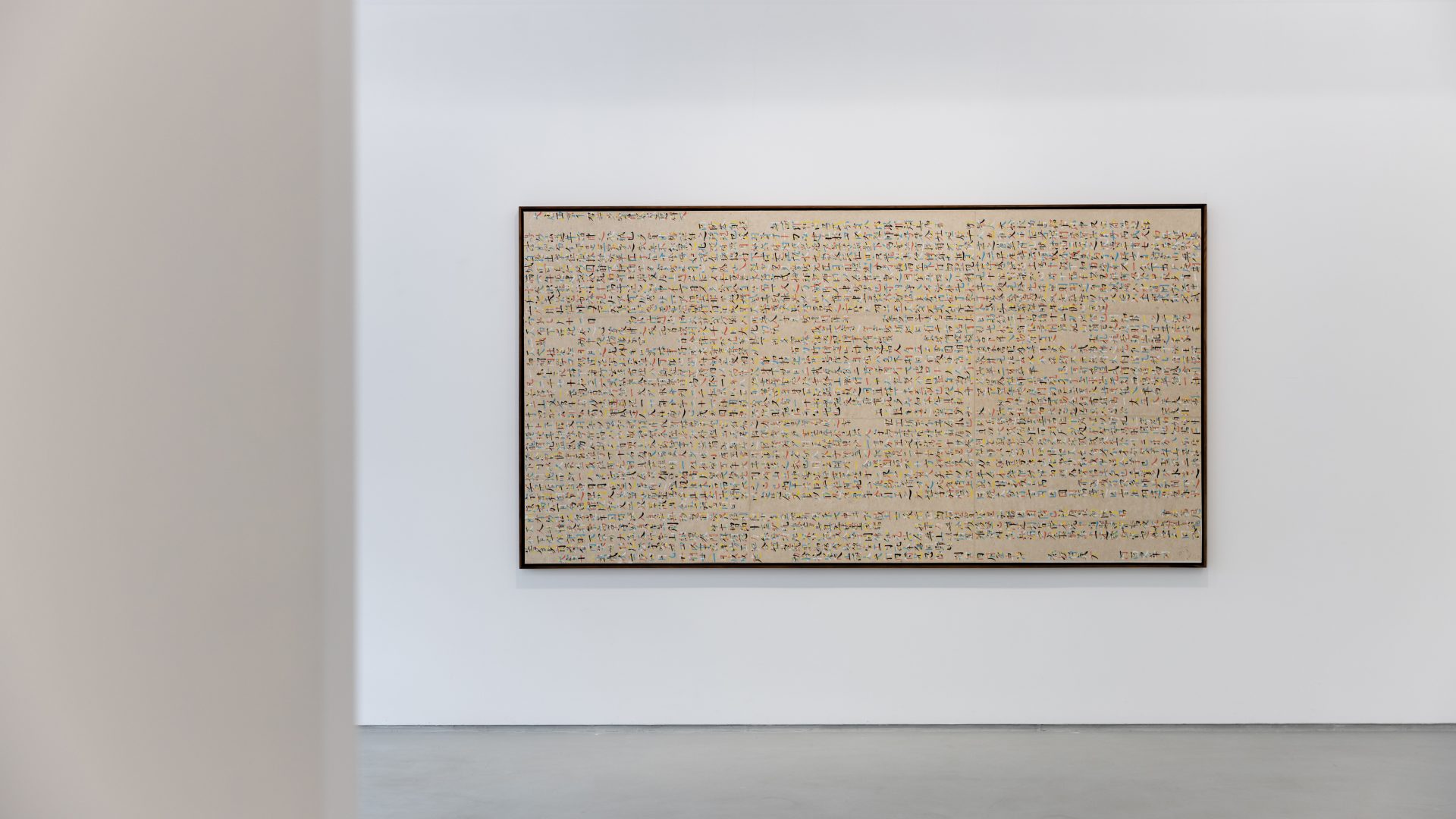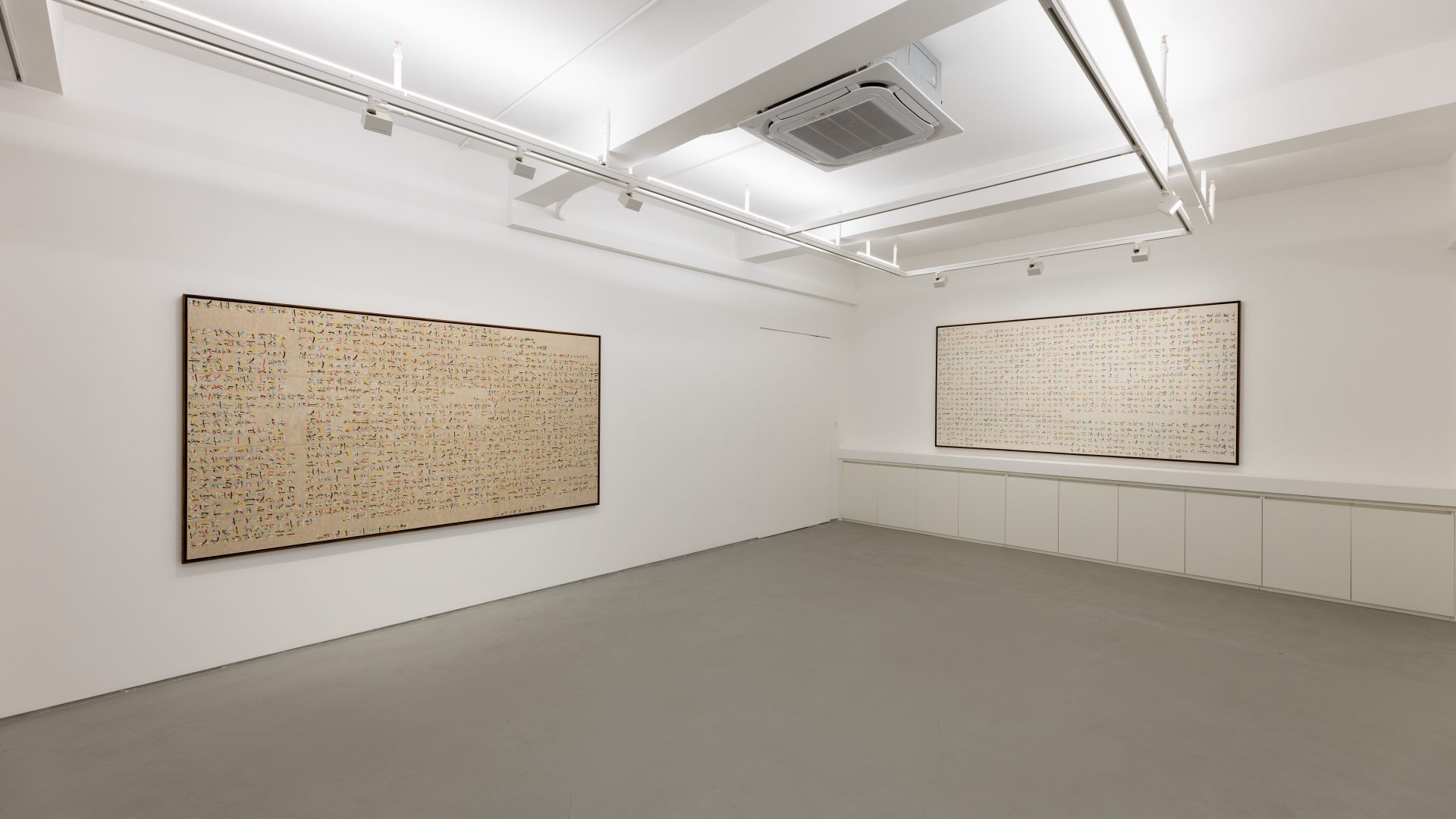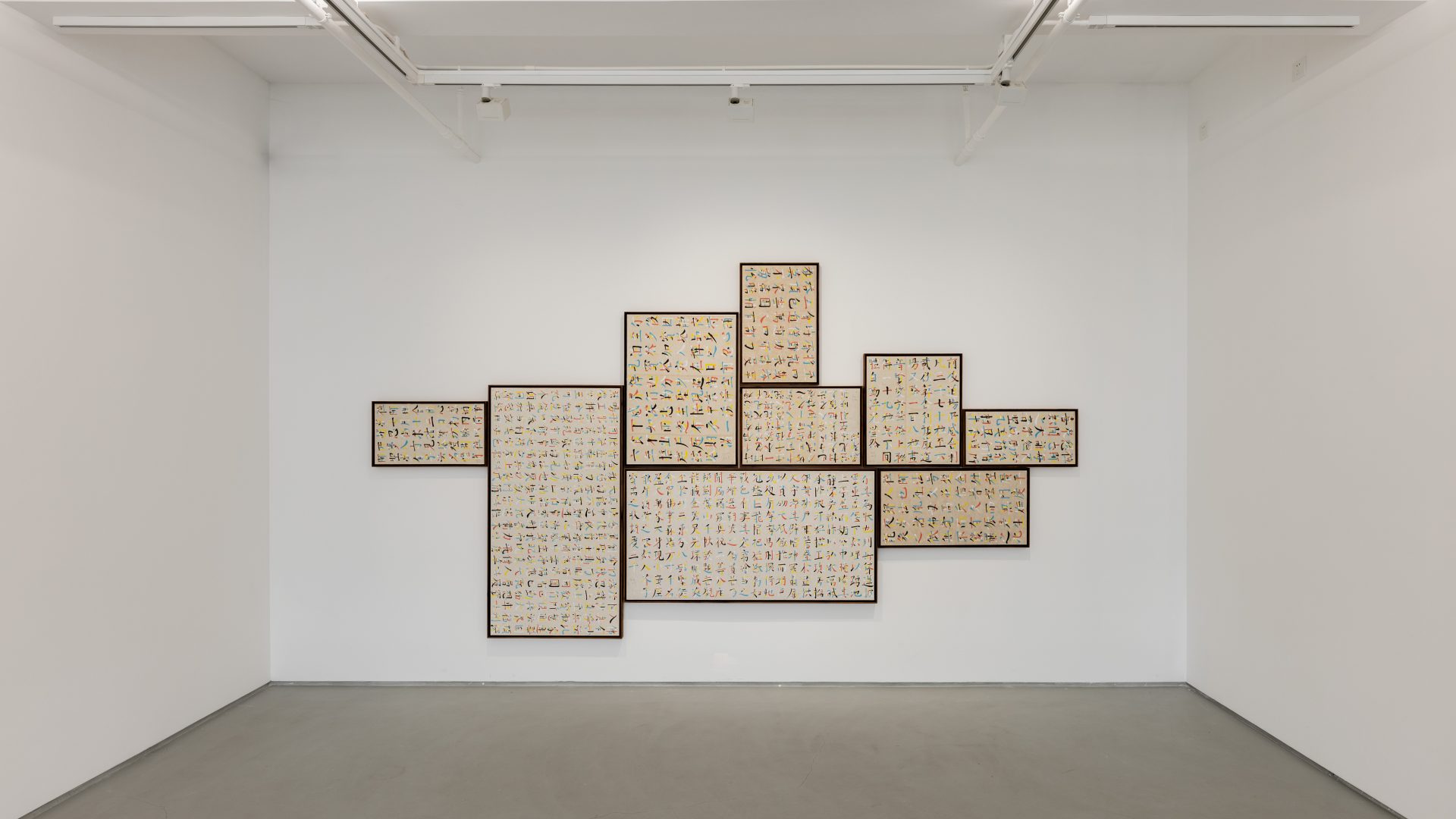-2019,2019,纸本⽔墨,65×71cm-700x639.jpg)
Birth (A Copy of Liu Gongquan’s Calligraphy of the Xuanmi Pagoda Stele Inscription – part) – 2019
2019
ink on paper
65×71cm
-2019,2019,纸本⽔墨,51×70cm-700x509.jpg)
Treatment (A Copy of Liu Gongquan’s Calligraphy of the Xuanmi Pagoda Stele Inscription – part) – 2019
2019
ink on paper
51×70cm
-2020,2020,纸本⽔墨,99×75cm-700x917.jpg)
Allusion (A Copy of Ouyang Xun’s Calligraphy of the Jiucheng Palace Liquan Inscription – part) – 2020
2020
ink on paper
99×75cm
-2019-,2019,纸本⽔墨,64×88cm-700x508.jpg)
Vow-Taking (A Copy of Yan Zhenqing’s Calligraphy of the Duobao Pagoda Stele Inscription – part) – 2019
2019
ink on paper
64×88cm
-2019,2019,纸本⽔墨,51×76cm-700x473.jpg)
Admiration (A Copy of Liu Gongquan’s Calligraphy of the Xuanmi Pagoda Stele Inscription – part) – 2019
2019
ink on paper
51×76cm
-2020,2020,纸本⽔墨,63×102cm-700x425.jpg)
Emperor (A Copy of Ouyang Xun’s Calligraphy of the Jiucheng Palace Liquan Inscription – part) – 2020
2020
ink on paper
63×102cm
-2019,2019,纸本⽔墨,64×35cm-700x1252.jpg)
Emperor’s Dream (A Copy of Yan Zhenqing’s Calligraphy of the Duobao Pagoda Stele Inscription – part) – 2019
2019
ink on paper
64×35cm
-2019,2019,纸本⽔墨,75×145cm-700x363.jpg)
Brilliance (A Copy of Yan Zhenqing’s Calligraphy of the Duobao Pagoda Stele Inscription – part) – 2019
2019
ink on paper
75×145cm
-2019,2019,纸本⽔墨,44×69cm-700x449.jpg)
See (A Copy of Yan Zhenqing’s Calligraphy of the Duobao Pagoda Stele Inscription – part) – 2019
2019
ink on paper
44×69cm
-2020,2020,纸本⽔墨,108×63cm-700x1204.jpg)
Liquan (A Copy of Ouyang Xun’s Calligraphy of the Jiucheng Palace Liquan Inscription – part) – 2020
2020
ink on paper
108×63cm

A Copy of Liu Gongquan’s Calligraphy of the Xuanmi Pagoda Stele Inscription – 2019
ink on paper
279×150cm

A Copy of Ouyang Xun’s Calligraphy of the Jiucheng Palace Liquan Inscription – 2016
2016
ink on paper
290×150cm

A Copy of Wang Xizhi’s Preface to the Orchid Pavilion Collection – 2020
2020
ink on paper
64×198cm

A Copy of Yan Zhenqing’s Calligraphy of the Duobao Pagoda Stele Inscription – 2019
2019
ink on paper
279×147cm
-2020,2020,纸本⽔墨,97×101cm-700x674.jpg)
Inscription (A Copy of Ouyang Xun’s Calligraphy of the Jiucheng Palace Liquan Inscription – part) – 2020
2020
ink on paper
97×101cm

Mother’s Dream (A Copy of Yan Zhenqing’s Calligraphy of the Duobao Pagoda Stele Inscription – part) – 2019
2019
ink on paper
85×43cm
-2020,2020,纸本⽔墨,96×50cm-700x1327.jpg)
Palace of the Previous Dynasty (A Copy of Ouyang Xun’s Calligraphy of the Jiucheng Palace Liquan Inscription – part) – 2020
2020
ink on paper
96×50cm
-2019,2019,纸本⽔墨-64×53cm-700x829.jpg)
Sarīra (A Copy of Yan Zhenqing’s Calligraphy of the Duobao Pagoda Stele Inscription – part) – 2019
2019
ink on paper
64×53cm
-2019,2019,纸本⽔墨,77×145cm-700x364.jpg)
Poems (A Copy of Yan Zhenqing’s Calligraphy of the Duobao Pagoda Stele Inscription – part) – 2019
2019
ink on paper
77×145cm
-2019-,2019,纸本⽔墨,43×68cm-700x443.jpg)
Propitious Clouds (A Copy of Yan Zhenqing’s Calligraphy of the Duobao Pagoda Stele Inscription – part) – 2019
2019
ink on paper
43×68cm
-2020,2020,纸本⽔墨,84×76cm-700x774.jpg)
Renovation (A Copy of Ouyang Xun’s Calligraphy of the Jiucheng Palace Liquan Inscription – part) – 2020
2020
ink on paper
84×76cm
-2020,2020,纸本⽔墨,84×76cm-700x774.jpg)
Learning Experience (A Copy of Liu Gongquan’s Calligraphy of the Xuanmi Pagoda Stele Inscription – part) – 2019
2019
ink on paper
76×51cm
-2019,2019,纸本⽔墨76×54cm-700x1003.jpg)
Parinirvana (A Copy of Liu Gongquan’s Calligraphy of the Xuanmi Pagoda Stele Inscription – part) – 2019
2019
ink on paper
76×54cm
-2019,2019,纸本⽔墨,96×64cm-700x1069.jpg)
Eulogies (A Copy of Liu Gongquan’s Calligraphy of the Xuanmi Pagoda Stele Inscription – part) – 2019
2019
ink on paper
96×64cm
-2019,2019,纸本⽔墨,64×86cm-700x518.jpg)
Authors (A Copy of Liu Gongquan’s Calligraphy of the Xuanmi Pagoda Stele Inscription – part) – 2019
2019
ink on paper
64×86cm

It’s an honor for Gallery MC to announce the upcoming launch of artist He Chi’s solo exhibition “Flourish” on February 12, 2023. Curated by Wang Che, the exhibition will last until March 26.
Calligraphy is an important genre of He Chi’s free and rich art. Since 2004, he has been copying classics in the history of calligraphy in a unique fashion, a fashion that doesn’t require creation but can help pass on the classics in question. He attempts to kill his time after work through the practice.
“Flourish” mainly presents He Chi’s study-based copies of regular-script calligraphy from the Tang dynasty during the two years from 2019 to 2020. The dynasty saw the final steps of completion and perfection of the law of Chinese calligraphic art, hence the flourishing models for later calligraphy learners. That is an age of prosperity in the history of Chinese civilization. The pieces by Ouyang Xun, Yan Zhenqing and Liu Gongquan, plus those by Zhao Mengfu from the Yuan dynasty, have become the first choices of models for beginners in calligraphy learning, and been copied and studied over and over for a thousand years, more or less. The “particularity of handwriting” it embodies reflects that the core spirit of traditional calligraphy and painting is the wellbeing and expression of humanity.
He Chi copies calligraphic classics using five brushes of five different colors for different strokes in rotation. On the surface, this approach clearly goes against the particularity of handwriting, which also means it’s “against humanity”, reminding us of the religious practice of life based on rigorous discipline. In this way, the artist attempts to sort out and reorganize the gene sequence of ethnic culture that alternates between latency and dominance in an individual’s body; and to revisit and reminisce about, with the help of his body, the conventional patterns and imaginations in the historical narrative of a national community.
Flourishing, is not only the visual manifestation of He Chi’s colorful calligraphy, but also the proud memory of the everlasting civilization built with Chinese characters, and even a disillusive fragile dream that haunts contemporary Chinese day and night.








-2019,2019,纸本⽔墨,65×43cm-700x1046.jpg)
-2019,2019,纸本⽔墨,64×31cm-700x1468.jpg)
-2019,2019,纸本⽔墨-64×53cm-1024x1213.jpg)
